The last unexplored places on Earth

Want to discover a new species, tread where others haven’t, or simply leave behind the stresses of the modern world? Then head to one of the planet’s last untouched corners.
A new study, published in the journal Nature, has revealed how just 20 countries contain nearly all (94 per cent) of the world’s wilderness (excluding Antarctica and the high seas). Of those 20, five alone contain 70 per cent of it.
Topping the chart is Russia with more than 15 million square kilometres of wilderness, identified as terrestrial or marine regions “free from human pressures, with a contiguous area of more than 10,000 square kilometres”.
Completing the top five is Canada, Australia, the US (largely Alaska) and Brazil.
Surprisingly, perhaps, the UK makes the top 20. All of its wilderness is marine, however, and attached to its overseas territories.
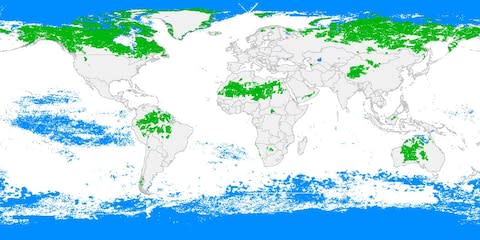
Terrestrial wilderness can be found in China, Algeria, Libya, Niger, Mauritania, Mali, Chad, Greenland and Egypt. Marine wilderness lingers in France (also a result of its overseas territories), Kiribati, New Zealand, Denmark, and Norway.
Only a handful of European countries can boast terrestrial wilderness, including Iceland, Finland and Sweden.
The study was published to highlight the rapid decline of these vital ecosystems – and urge the world’s governments to do more to protect them. “A century ago, only 15 per cent of Earth’s surface was used to grow crops and raise livestock,” it says. “Today, more than 77 per cent of land (excluding Antarctica) and 87 per cent of the ocean has been modified by the direct effects of human activities. Between 1993 and 2009, an area of terrestrial wilderness larger than India — a staggering 3.3 million square kilometres — was lost.”

Responsible travel to many of these unspoiled corners is possible. Below we’ve outlined some options.
The Darien Gap, Panama/Colombia
The Pan-American Highway is a vast network of roads that stretches for 19,000 miles from Prudhoe Bay, on the north coast of Alaska, to Ushuaia, the world’s most southerly city. It passes through 17 countries, providing an unbroken link from the 70th parallel north to the 54th parallel south... with one exception: the Darién Gap.
So inhospitable is this 60-mile nugget of marshland and rainforest between Panama and Colombia that, even in our high-tech age of 3D printing, space tourism and undersea railways, we still haven’t built a road that connects North and South America.
To this day, no major settlements exist in the Darién Gap. Its only residents are the indigenous Embera-Wounaan and Kuna people, with an estimated 2,000 living in the area, getting around in dugout canoes. The first crossing of the gap by car in 1960 took a staggering five months, at an average speed of 200 metres per hour, and adventurers, with all their GPS and failsafes, still talk about it with the sort of reverence normally reserved for the Himalayas in winter.
“When the tarmac peters out at Yaviza, Panama, the jungle looms large ahead in the form of an endless green sea,” said Levison Wood, the British adventurer, who tackled it for his TV series Walking the Americas. “The forest, raised among the mountains, drifts high into the mist. Beyond, for over 100 miles, there is nothing but impenetrable valleys, swamps and, with disturbing frequency, death.
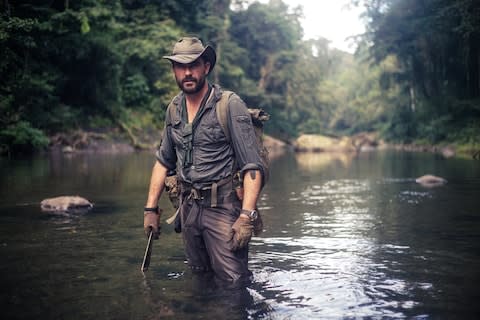
“The local military commander has summoned me to the nearby army barracks to see whether I am prepared to do the unthinkable. To go through the gap. ‘Down here,’ he jabs a fat finger at a large blank space the size of Jamaica on the map in front of us, ‘is nothing except cocaine plantations and Indians. And you can’t trust the Indians, they’re the ones growing it. Here, you get the narco-traffickers along the river.’ Another blank space. ‘And here is where all the illegal immigrants try to get over the mountains. Most of them die. The jungle is full of bones.’ It sends a shiver down my spine. ‘Hundreds of them,’ he adds with malice. There is a glint in his eye. I simply nod and stare at the map.”
Incredibly, Scotland tried to start a colony in the middle of this uncharted, mosquito-ridden wilderness. It didn’t end well.
Want to cross the Gap yourself? Secret Compass is one of the few adventure companies to offer hardy travellers the chance to conquer the Darién. A two-week trip, departing in March 2019, costs £2,899 per person.
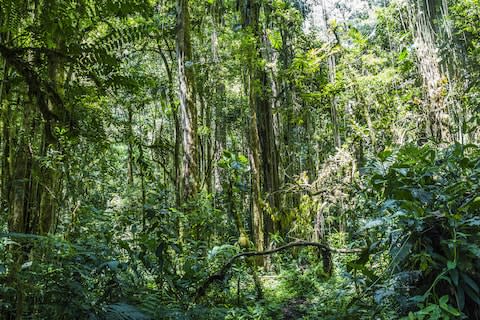
Sakha Republic, Russia
The wildest corner of the wildest country. Russia’s Sakha Republic, also known as Yakutia, is roughly the size of India. But India is home to more than 1.3 billion people, while Sakha’s population is less than one million - around a third of whom live in the capital, Yakutsk. That means there’s an awful lot of forest, steppe and mountains waiting to be explored.
The majority of the region’s inhabitants are Yakuts, but other ethnic groups, such as Evenks and Tatars, can also be found. Many still live a traditional nomadic lifestyle, relying on hunting and reindeer herding.
Among those to venture to the deepest, darkest corners of Sakha is Alexander Khimushin. For his photography project The World in Faces, he spent six months taking beautiful portraits of remote tribes in Siberia. Pictured below is a Yakut shaman.
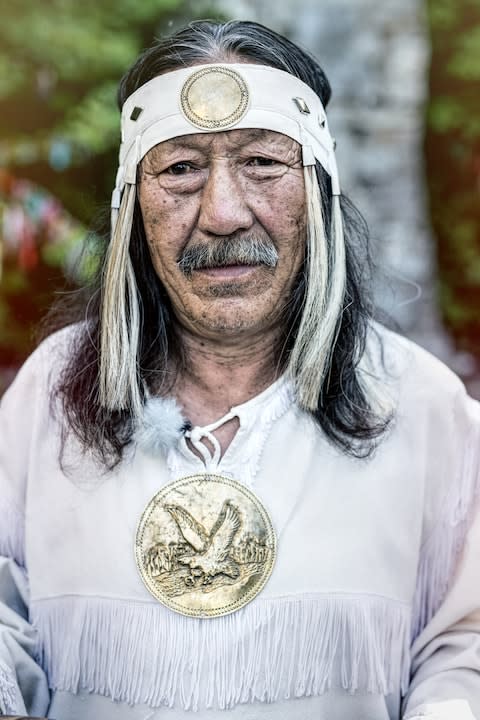
“It's an enormous region, almost double size of Australia and larger than the whole of Europe,” he said. “Siberia is one of the world’s last frontiers of the unknown. Everyone knows it is very cold and sparsely populated – but what do we know about people living there?”
Sakha is also home to Oymyakon, a village of 500 souls that’s widely recognised as being the coldest inhabited place on the planet. How cold? Well, earlier this year it plunged to -62C, which wasn’t far off its record, -67.8C, the lowest ever reading outside Antarctica.
Photographer Amos Chapple went there a few years ago and found living in the frozen environment “exhausting”. He said: “I remember feeling like the cold was physically gripping my legs. The other surprise was that occasionally my saliva would freeze into needles that would prick my lips. Breath-mist was as thick as cigar smoke and so I had to hold my breath when taking a picture. The only people outside were either dashing between houses with their mitts clasped to their faces, or were drunk and looking for trouble.” They’ve a novel way of dealing with the chill, he added: “Russki chai, literally Russian tea, which is their word for vodka.”

The gateway to Sakha is Yakutsk, a city where Soviet-era statues still stand proud. Getting there means a flight via Moscow with Aeroflot or S7 Airlines. From there you can find solitude with a trip to the Lena Pillars Nature Park, a Unesco World Heritage Site named after spectacular rock formations that line the edge of the Lena River and soar to heights in excess of 100 metres.
There are few organised tours to Sakha, but further east lies the Kamchatka Peninsula. It has the planet’s highest density of brown bears, not to mention 300 volcanoes, but not many people. Secret Compass visits the region, offering travellers the chance to summit volcanoes and trek through trail-free untracked wilderness. A trip in 2019, from August 18 - September 1, costs £2,999 per person.

Vale do Javari, Brazil
Think of uncharted wilderness and the Amazon quickly springs to mind. And this region, close to the border with Peru, is one of the least explored – by global civilisation, at least. That’s because Vale do Javari is one of the largest indigenous territories in Brazil and home to at least 14 uncontacted tribes, the greatest concentration in the world.
It is part of the vast Brazilian state of Amazonas, a region so inaccessible that its biggest mountain - indeed the tallest in the whole country - Pico da Neblina, wasn’t discovered until the 1950s.
To visit this corner of Brazil, you’ll need to reach Manaus, a remarkable city of more than two million plonked in the middle of the jungle. From here the most popular options for wildlife watching are cruises on small but smart riverboats up the Rio Negro, or trips farther upriver to Tefé to stay at the Uakari Floating Lodge. Across the border, Iquitos is the main base for excursions into the Peruvian Amazon.

Gangkhar Puensum, Bhutan
The aforementioned Pico da Neblina wasn’t discovered until the 1950s, and was first ascended in 1965 (12 years after Everest). But there remains dozens of mountains that have never been conquered.
The tallest is almost certainly Gangkhar Puensum in Bhutan, which tops out at 7,570 metres. The country prohibits mountaineering, partly because its biggest peaks are considered sacred but also because it lacks suitable rescue services.
Mount Kailash, in Tibet, is another unscaled behemoth. Modern climbers shouldn’t have problems reaching the top, but they are currently banned from doing so as Kailash is considered sacred to several religions including Hinduism, Buddhism and Jainism. In the 1980s Reinhold Messner, the great Italian mountaineer, was given permission by the Chinese government to try, but he declined. “If we conquer this mountain, then we conquer something in people’s souls,” Messner said.
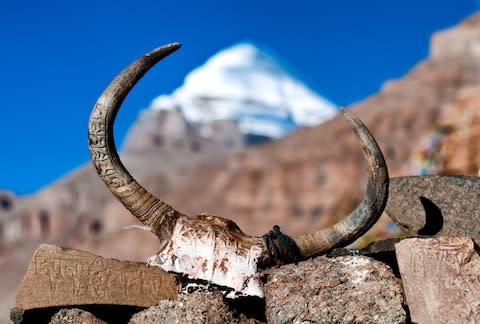
The tallest unconquered non-prohibited mountain is probably Muchu Chhish, at 7,452m, which sits in a particularly remote and inaccessible part of Pakistan’s Karakoram range. The most recent attempt was by an Englishman, Pete Thompson, who was forced to turn back at around 6,000m.
You can’t reach the top of Kailash, but you can walk around it (which is exactly what Messner chose to do instead). World Expeditions offers a three-week trip for £3,390 per person, including time in Kathmandu (Nepal), Lhasa, and a three-day trek around the base of the mountain.
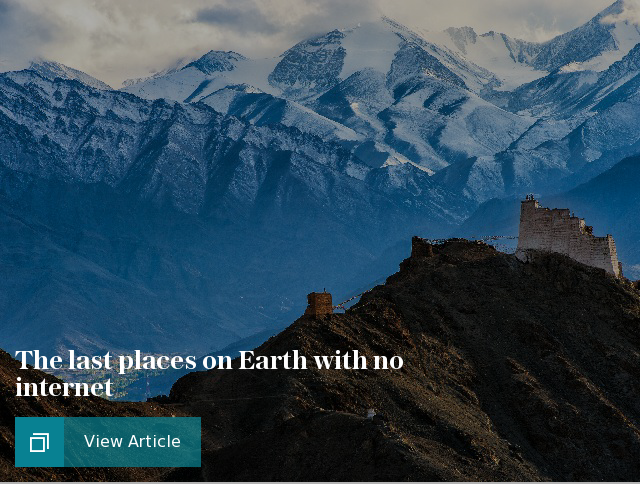
New Zealand
It’s hardly off the map, with around 3.7 million making the journey to New Zealand in 2017 (including 250,000 Britons), but New Zealand can lay claim to being the large major landmass to be settled - and therefore explored - by humans. It wasn’t until around 1300 that the first Polynesians settled in the islands that would later be called New Zealand (Dutch explorer Abel Tasman was the first European to see the country in 1642).
For modern travellers in search of remoteness it has to be Fiordland, a glacier-carved wonderland of towering peaks, waterfalls, remote lakes and - surprise, surprise - fiords. Milford Sound is the region’s icon, and therefore heavily subscribed, but there’s solitude for those who arrive there on foot, via the 33-mile Milford Track. See milfordtrack.net for detailed information.
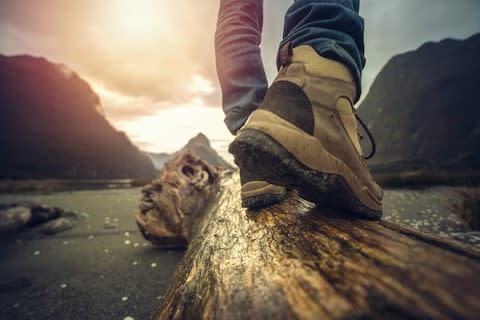
As the recent Nature study outlined, New Zealand still contains vast tracts of marine wilderness. Stewart Island is a fine option. Writing for Telegraph Travel, David Whitley explained: “New Zealand’s often forgotten third island is cast adrift of the South Island’s bottom end, at the mercy of the roaring forties and its howling winds.
“Attempts at human settlement have broadly failed. Maori have only ever lived on Stewart Island sporadically, while European whalers, sealers, farmers and saw-millers have seen their industries die out pretty quickly. The current population is officially 381, and it has never really crept much higher than that. This has left the vast bulk of the island in almost pristine condition. The National Park covers 85 per cent of the landmass, and aside from a few tremendously squelchy tracks lacing through it, there aren’t many signs of human interference.”
Greenland
At 375,000 square miles, four times the size of the UK, Northeast Greenland National Park is the largest protected area on the planet – and entirely deserted. There are no permanent human inhabitants, and while scientists come and go in summer, the only people who have regular access to the national park are whalers and sealers from the town of Ittoqqortoormiit (which itself has a population of only 452).
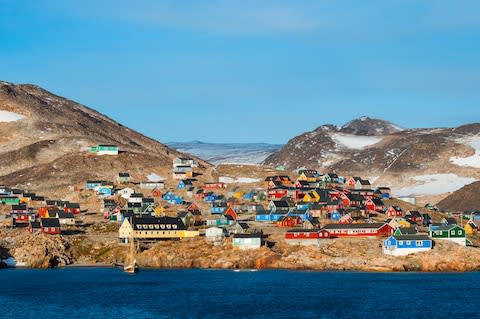
You’ll have to leave most of this national park to the polar bears and musk oxen, but you can spy it from the deck of an expedition cruise ship. Hurtigruten’s vessels occasionally visits Greenland’s eastern flank. Caroline Elderfield joined one such voyage in 2017 for Telegraph Travel. “Although many migratory birds had already gone there was still lots of wildlife, starting with pods of humpback whales which accompanied us at the beginning of our voyage from Reykjavik,” she said. “During the fortnight we saw snow buntings, Greenland falcons, ivory gulls, kittiwakes, skuas, orcas, musk oxen, Arctic hares and stumpy native reindeer.
“For me, however, it was the landscape that made the trip worthwhile – so remote that the best guidebook to this vast island territory has one solitary page devoted to the east coast.
“Fossicking around in rock pools of lurid, swirling granite, finding garnets in the raw on the beach or standing in awe of the emptiness and huge skies, every day in Greenland brought moments when I was moved to tears.”
Hang Son Doong, Vietnam
Many miles of underground caverns are yet to be explored. Indeed, the subterranean record books are being rewritten on an almost annual basis and some of the biggest caves on the planet were only discovered relatively recently.
Krubera Cave, in the breakaway republic of Abkhazia in Georgia, is the deepest known cave and one of only two deeper than 2,000 metres. Of its eight miles of tunnels, the furthest from the surface (2,191 metres down) was discovered in 2007. It is no place for ordinary travellers.
But Hang Son Doong in Vietnam, the largest known cave passage in the world by volume, which was found in 1990 and only fully explored in the last few years, can be seen by tourists. Only 1,000 visitors are allowed into the caves each year, with each tour taking four days and three nights, and costing £2,245. Those that sign up are rewarded with the chance to experience a cave so big it has its own weather system. At its tallest point the cave can accommodate a 40-storey skyscraper, while at its widest point there’s room to fly a Boeing 747. Oxalis Adventure Tours is the only company authorised to lead tours into these extraordinary caves. Visit oxalis.com.vn for more information.
The deep sea
We know more about the surface of Mars than we do the bottom of the ocean, so one could be forgiven for believing that trips to the depths are impossible for all but the luckiest of marine biologists. In fact, there are options for ordinary tourists.
Getting to the very bottom isn’t easy. The average depth of the Atlantic Ocean, for example, is 3,646 m (11,962 ft), beyond the reach of all but the most high-tech submarines in the hands of research institutes – so you’ll need to be a marine boffin, or else very good friends with one.
But if you’ve got $800 in your bank account, and are able to get to the Caribbean island of Curacao, you can dive to a depth of up to 1,000 feet (320m) in Substation Curacao’s submersible. Its “Adventure Dive” lasts for 90 minutes and passes shipwrecks and reefs before reaching its maximum depth, which lies beyond the reach of sunlight.
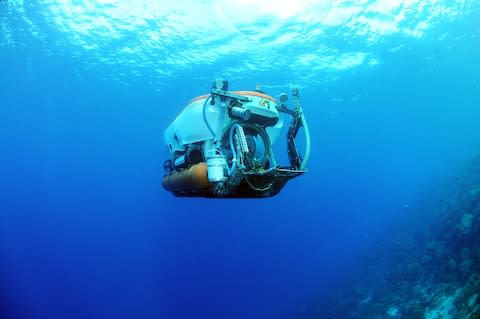
Not deep enough? Another option can be found in the diving hotspot of Roatán, in Honduras. The submarine Idabel has been taking the paying public beneath the waves for almost 20 years, making more than 800 successful dives, and can currently take up to three tourists to a maximum depth of 3,000 feet (915m). Incredibly, Idabel was built in a back garden in Oklahoma (it was tested in Broken Bow Lake) by a marine enthusiast called Karl Stanley who has no formal engineering experience. If you can get over that fact, and have around $1,000 in your pocket, head to its website.
If you’d rather be a DIY deep-sea explorer, you can actually purchase a Triton 3300/3 submersible for around $3m. It can descend to 3,300ft (1,000m) and has room for three people.
Still not deep enough? You’ll need to wait, with fingers crossed, for the Cyclops 2 submersible from OceanGate. Construction began last year, and deep-sea testing was expected to start in 2018. It will be capable of reaching 13,000 feet (4,000 metres) below the surface, deeper than any privately-owned submersible, with five on board. How much it will charge private clients to join a dive is yet to be confirmed.

Cape Melville, Australia
The giant granite boulders and dense rainforest of this peninsula, on Australia’s northeastern tip, make it utterly impenetrable. So much so that in 2013 the only way a team of scientists and filmmakers could reach its uplands was by helicopter. The expense was worth it. They discovered three new species - a gecko, a skink and a frog - and were generally amazed by what they described as a “lost world”.
“We think in Australia that we know what’s out there pretty well,” said Conrad Hoskin of James Cook University, who led the expedition, at the time. “But to be able to walk into a new mountain range and find several new animals immediately shows that there must be very many more out there. If anything's likely to harbour something amazing, it would be there.”
Reaching the region involves a long drive from Cairns to Cape Melville National Park. A 4x4 vehicle is a must. The park has several campsites; its official website lists walking routes and safety advice.
Madagascar
Like New Zealand, Madagascar was only colonised by human settlers relatively recently - perhaps as late as 500AD - which means it has a wealth of endemic plant and animals species that have survived. Its most unexplored corner is Tsingy de Bemaraha National Park, a labyrinth of limestone that covers a sizeable chunk of the island’s western half. It is utterly impassable, a maze of crooked canyons, caves, tunnels and spires, so its animal inhabitants - including Madagascar’s famous lemurs - go largely undisturbed. The unique geology also means there are endemic species that have evolved to embrace life among the karst skyscrapers.
G Adventures offers an eight-day Baobab & Tsingy Explorer tour, taking in the national park and more otherworldly attractions. From £543 per person (flights extra).

Rub' al Khali
Their very nature of deserts - hot, dry, inhospitable - makes them largely unvisited. Rub' al Khali, meaning literally “The Empty Quarter”, seems a good place to start. It is the largest contiguous sand desert in the world, 250,000 square miles of dunes straddling Saudi Arabia, Oman, the UAE and Yemen, where the only signs of life are scorpions, the occasional bird or a camel carcass.
Bertram Thomas was the first Westerner to cross the Empty Quarter, taking 59 days to travel from Dhofar, Oman, to Doha, Qatar in 1930. Modern travellers can attempt something a little less arduous - short trips can be arranged through many hotels in Oman.
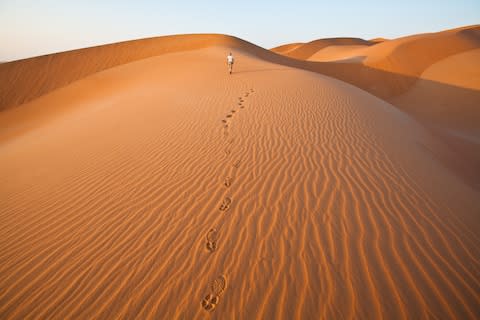
Namibia
The name “Namib” translates as “vast place”, which is apt given that Namibia is one of the least crowded destinations on the planet. Only Greenland, the Falkland Islands, Mongolia and Western Sahara (in that order) have fewer people per square kilometre.
“Most people opt to combine wildlife and landscape, and the best way to do it is by driving yourself,” says Nigel Richardson, our expert to the country. “More adventurous destinations include, in the north-west, the bleakly beautiful, fog-bound Skeleton Coast, and the mountainous desertscapes of Damaraland and the Kaokoveld, home to the Himba people (you’ll need a 4x4 to explore these regions). Also, in the far south, the ghost town of Kolmanskop, abandoned when diamond-mining operations ceased half a century ago; the restricted area of the Sperrgebiet; and the geological freak show that is the Fish River Canyon. The five-day, 50-mile trek along the latter is one of Africa’s greatest hiking trails.”
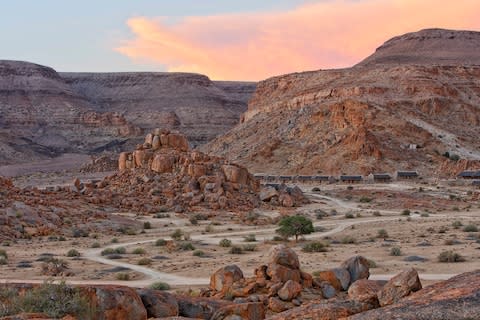
Patagonia, Chile/Argentina
This sparsely populated part of South America has pockets of civilization and tourist infrastructure - but large tracts of it remain untouched. “Vast and empty, wind-swept and barren, Patagonia is an archetypal landscape of the imagination,” writes Chris Moss in his guide for travellers. “Where the pampas run out around the Rio Negro, the land becomes unfriendly to human settlement, and if you drive down the great highways – Argentina’s Ruta 3 and Ruta 40 or Chile’s Carretera Austral – you’ll see mainly sheep, flightless rhea and llama-like guanacos. Eventually you come to the Andes, where ice-fields break through to form glaciers on the lakesides, or to the lonely island of Tierra del Fuego.

“Patagonia is home – surprisingly, perhaps – to the world’s seventh-largest desert, a mainly flat swathe of steppe and tableland that occupies most of Argentine Patagonia and juts into Chile’s Aisén and Magallanes provinces. Also in the latter are two great icefields, remnants of the last ice age, which spill out of the Andes as impressive glaciers. The wildest winds in South America blow across eastern Patagonia, while the west has some of the most beautiful temperate rainforests on the planet.”
Most people travel to Patagonia on tours – in small groups or self-guided. The best can be found on the website of the Latin American Travel Association (lata.travel).

